This is a common sentiment among long-time rocket geeks. There's a reason: Estes' business model is focused on 13-year-olds who will buy four or five kits before they're done. There's millions such kids, where there's only a few thousand of us 38-year-old kids who might build a hundred rockets.
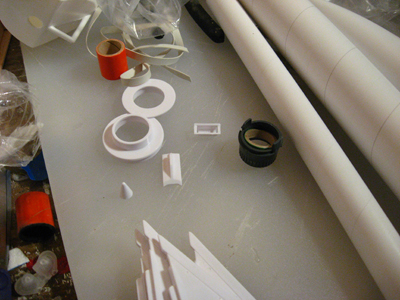
Not very many kits into it, I discovered I could scratch-build rockets for a fraction of the price of a kit. It's just gloss-coated kraft paper tubing, a plastic or balsa nose cone, some card stock or carbon fiber centering rings, balsa fins. Bulk buys, such as Apogee's 'Tubes O'Plenty' could outfit me with the makings of a dozen rockets for the price of two or three kits.
Plus, I learned some tricks to making better rockets. Basswood fins are tougher than balsa, and while they're heavier, they're doable. Kevlar shock chord mounts don't separate as often, especially if you go with 200 to 400 lb line. Nylon parachutes are worth the extra money (they're reliable), and you can use swivel hooks to use the same parachute for multiple rockets.
Plus, some of Estes' kits are frustratingly poor designs. The Porta-Pot Shot, for instance: they sell this as a B & C motor rocket, but it should be a D & E because it has obscene amounts of drag. And even when I modified it to support a larger motor and parachute, I still wound up with the parachute getting caught up and the rocket was ruined on its maiden voyage.
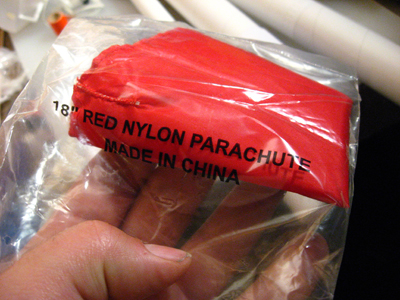
Kits like that, you can see why those 13-year-olds give it up after four or five kits.
Some of Estes' kits are neat, though. The Skywriter, for instance. I'm presently building the fifth Scribble in the Midwest Rock Lobster Fleet's history. It's a smallish rocket, easily lost and damaged, but it's cute.
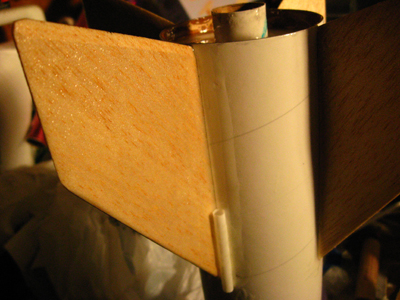
And I say it's smallish, but I remember when I built our first one, I thought it was a real clydesdale. The nose cone of this rocket would fit the motor tube of Bebop, the Estes Big Daddy kit I've also got underway.
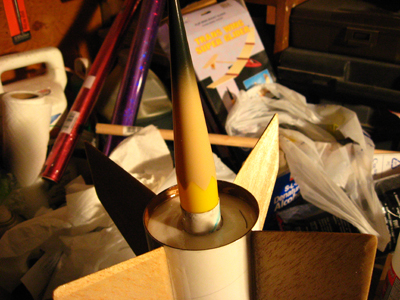
But, as Arlo Guthrie might say, that's not what I came to talk about. I came to talk about the D-Region Tomahawk.
This was an impulse buy nestled in an impulse buy: I was buying a couple of composite motors from a discount rocketry vendor and I saw they had the D-Region Tomahawk kit priced to move. Ten bucks less than the local hobby shops.
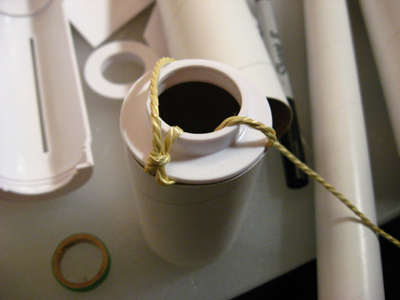
And it was a kit I'd been intrigued by.
This is no ordinary Estes rocket. I thought it was a BT-70 tube, but it's a weird size, something between an BT60 and BT70. Usually, scale models take a standard tube size and base the length on the diameter.
It's also a much more engineered kit. A very sophisticated tail section includes plastic bulkheads to secure the stuffer tube, and a first-rate motor retention system. The fins aren't secured to the motor mount (that would be even better), but they have built-in fillets and tabs to fit molded fins slots. In addition to the launch lugs required for launching on a 3/16" launch rod, the kit includes a scale launch rail button to be more like the real sounding rocket.
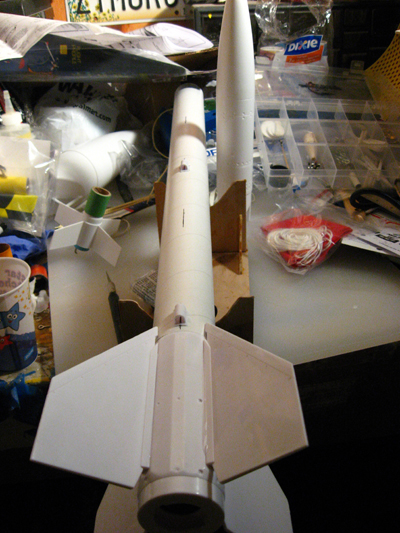
Some things are wonky: the tip of the nose cone is a tiny, incomprehensibly separate piece. The shock chord is both an easily melted rubber band and it comes with Estes' trademark built-to-break mount. On a rocket this size, a wad of paper glued to the wall with a rubber band in it is a recipe for separation. I used 400 lb kevlar tied around the forward stuffer tube bulkhead.
Just as most places they suggest wood glue or plastic cement, I used epoxy.
Despite my modifications, I have to hand it to Estes for producing a decent scale model kit. They even include a nylon parachute, which is both all but unheard of with them and something that by itself can retail for almost half the price of the kit. I'm sure it cost them all of 50¢ from their Chinese supplier, but it's a high value added sort of thing.
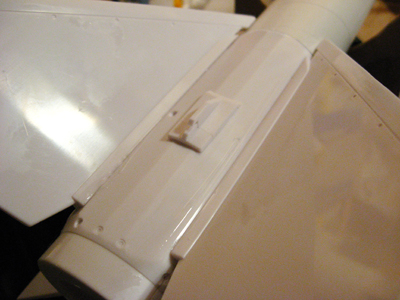
Painting the rocket accurately will be a challenge. Probably not going to happen if I'm flying it this weekend.
I guess my question for Estes is why they can't make more stuff like this? That, and why they can't find room in their production schedule to make 0-delay booster motors in all impulse levels (they used to, now they're down to C6-0 and D12-0). Their excuse is they would only sell a few thousand such motors, but to that I say, 'Great, then it'll only take you one shift to make the year's supply.'

No comments:
Post a Comment